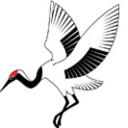Yahoo Answers is shutting down on May 4th, 2021 (Eastern Time) and beginning April 20th, 2021 (Eastern Time) the Yahoo Answers website will be in read-only mode. There will be no changes to other Yahoo properties or services, or your Yahoo account. You can find more information about the Yahoo Answers shutdown and how to download your data on this help page.
Trending News
Is Dim Mak anything other than Kyushojutsu by another name?
After the discussion yesterday, I figured I'd ask. If it's just kyushojutsu, then that's fine, and that's exactly what I'd found of it.
If it's something else, can you provide anything other than anecdotal evidence ("Yeah, I once saw a book that said something about it in a library that burned down in my dreams one time when I was experiencing past life regression and found out I was Napoleon") that dates back to a point prior to the 1950s and is not pure fiction?
I think people are misunderstanding:
I'm -not- curious whether kyusho and kyushojutsu exist; I'm acquainted with this.
Dim Mak is either:
1.) Exactly the same, just a Chinese expression of it.
2.) Something totally different but still a part of martial history, which is supported by some evidence prior to 1950.
3.) A load of horse crap and absolute bollocks.
It's simple: Convince me which it is.
It's not about responsibility; it's simply answering the question with support.
I will examine Bubishi now.
@J: Not demanding, though I could see how you'd read it as such, so ご免ください. I was simply trying to concisely clarify my point.
I did find a lot of references to dim mak in a current Bubishi (Patrick McCarthy's translation), the only cited sources from Chinese texts being, again, after 1950.
@SiFu Frank: Okay, so that does seem to be supporting the idea that Dim Mak is simply the Chinese equivalent of Kyushojutsu, and the revitalization aspects expressed in Amatsu Tatara Shumon, Shiatsu, and the like. Would you concur with this assessment?
5 Answers
- JayLv 79 years agoFavorite Answer
From my understanding, they're similar, but not exactly the same. Dim Mak was built around the acupuncture points, attacking the meridians (or viewed as nerves, as there are nerve channels running the same 22 channels as the meridians). This was used in Chin Na and spread into styles as a "secret" or "hidden" method. Taijiquan is full of these strikes, as well as countless other Quan Fa.
That information kept it's place even into the Okinawan styles. Not as much is there, but some very major points are pretty obvious. As far as Japan goes, I've never studied into it. As collective knowledge, many things surrounding pressure points and weaknesses in the body examined and studied. I'm sure Japan's treatment of prisoners didn't stop at testing swords. If were were an opportunist, that would be too good to miss.
Dim Mak is purely the striking of acupuncture points, where as Kyushojutsu exploits any weak spot in the body, not just those points.
Dim Mak was Westernized into some kind of touch of death, and even though there are points that supposedly cause death (never tried them myself, so can't say for certain), that no where near what it's all about.
Dim Mak is not a myth nor a story. I've been studying it for over 7 years.
ADDED
For proof: it's in the Bubishi. And no it's not the exact same thing. As far as convincing you goes, that's not my responsibility.
@OC: I wasn't implying a lack of support. Saying "convince me" isn't the same as "tell me". Being demanding isn't supportive towards my generosity and willingness to share my insights and thoughts.
Dim Mak follows the principles of traditional Chinese medicine. Kyushojutsu follows the principles of traditional Japanese medicine. Though sharing similarities, there is a difference in opinion between the two. The Bubishi (originally Chinese in origin) shares the collective knowledge of both. Dim Mak is old... ancient. It's about as old as acupuncture. Neither started in the 1950s.
- Anonymous4 years ago
No the Hammer Fist can't implode the chest even with the undeniable fact that it may stop a persons' coronary heart. There additionally are different places on the physique that in case you hit you could reason inner bleeding. there is likewise a thank you to tear the esophagus from the tummy inflicting the acid to leak out and consume your insides. i've got confidence that it is white tiger kung fu that teaches to break the interior physique without leaving a mark on the outdoors. even with the undeniable fact which you would be able to experience you very own Chi working by way of your physique. If no longer then you definitely have not reached the point which you would be able to desire to be to accomplish those kind of strikes. additionally there is great self-discipline featuring understanding those ideas. that's what you will study first. then you definitely'll pass directly to the different greater stepped forward parts of the paintings. despite you do shop an open concepts or this is going to be very hard so you might channel your Chi and carry out some ideas.
- idaiLv 59 years ago
Hi there
Personally I blame frank dux for making this famous. Which is a shame really because its a load of bollocks. Not kyusho but the way it has been sold. Parlour tricks for piss poor martial artists!
Kyusho exists but its not knowing about where these points are or how the chi flows. It is however extremely important to know how to open them up to create the point in the first place. First rule of amatsu is that the whole body is one great big kyusho! You can use them to hurt or to heal but just having knowledge of where they are and sticking your finger in them wont do a great deal. You have to have the taijutsu as well as the knowledge of kyusho and amatsu :)
One of the reasons why Chinese and Japanese traditional medicine go hand in hand with the martial.
Best wishes
idai
- SiFu frankLv 69 years ago
As a student of Dim Mak it is a system using pressure points along meridians and it uses the same principals as acupressure or acupuncture. It makes no extraordinary claims like being able to kill someone or paralyze someone with a simple touch or series of touches. It does enhance your fighting technique. Since it needs fairly accurate strikes it will only benefit someone who is already skilled enough to target strikes well. It can be used for helping with pain management and help heal as well just as acupuncture can.
Source(s): life - How do you think about the answers? You can sign in to vote the answer.
- KokoroLv 79 years ago
the way i understand it, it is, although i meant to look into the kanji to see.
im not sure of the origin of the name dim mak, that may be something else, but the way i understand dim mak its just pressure points
Source(s): 30yrs ma





